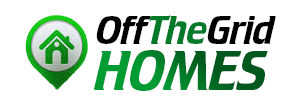Ways To Save Energy In The Office –
Energy-
At Home
If a Flex Alert is issued, people should deactivate any unnecessary appliances, which are often computers or lights. Use of major appliances should be postponed to after 7 p.m, and equipment should not be left on overnight. Devices should be unplugged rather than merely switched off, or they will consume energy constantly. Air conditioning should be turned down to no more than 78° F.
Residents can save energy in a number of ways. Standard incandescent light bulbs can be replaced with compact, fluorescent ones, which reduces lighting costs by 75 percent. Residents can unplug such equipment as battery chargers when they are not in use: altogether, these can consume as much power as a refrigerator.
The installation of faucet aerators and low-
Other Energy-
ENERGY STAR-
Dishwashers and washing machines should only be operated fully-
Insulation
Sealing all leaks in pipes and adding insulation could save as much as 20 percent of the cost of heating and cooling a home. Air leaks can be detected by holding a burning incense stick close to attic hatches, ceiling fixtures, electrical outlets, plumbing fixtures, electrical boxes, doors, and windows & anywhere where air could possibly pass.
This can reduce an energy bill by as much as ten percent. Weather-
Business
A report produced by Collaborative Economics, which works with senior executives from businesses, non-
If natural light is maximized and unnecessary office lights and unused equipment such as coffee makers, fax machines, computers, and printers are switched off, businesses can make a major reduction to their use of electricity.
Businesses can keep doors and windows closed to preserve cooled air. People should dress appropriately for the weather. Layers of clothing should always be adjusted before the thermostat.
Some measures can be adopted by larger establishments. Janitorial personnel should clean only one floor at a time, leaving the lights elsewhere switched off. Unused areas can be sealed.
Using Light Emitting Diodes on exit signs or in other places can use from 80 to 95 percent less electricity and last 10 to 20 times longer than incandescent signs. Maintenance of mechanical equipment and buildings should be regular.
Conclusion
While this advice was given in California, it would save electricity anywhere in the world.
